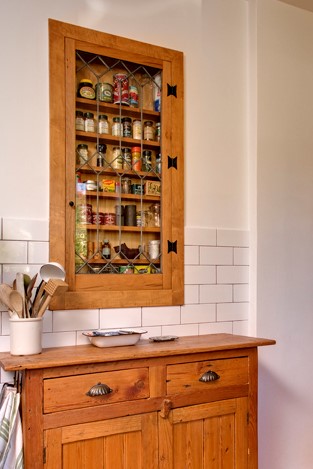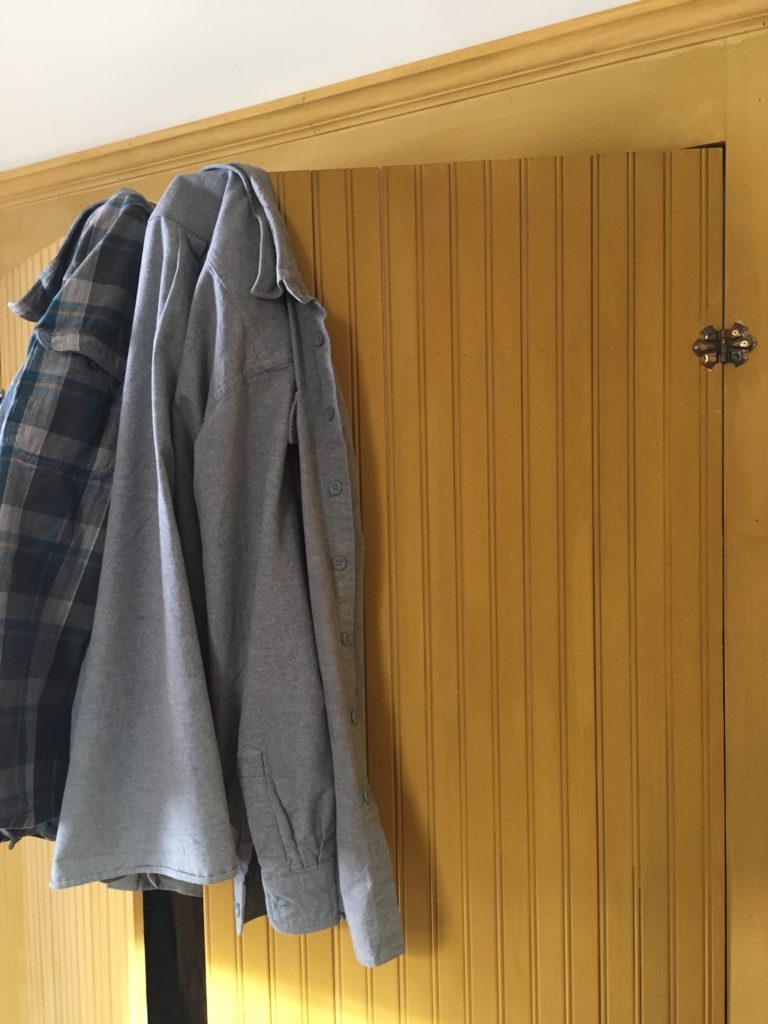We may receive a commission when you use our affiliate links. However, this does not impact our recommendations.
The April issue of Popular Woodworking Magazine will have a reference article on eight types of commonly used hinges. Describing the uses and installation of so many varieties takes a lot of space, leaving little room for illustrations of hinges in use. The editors and I agreed that a series of related posts would be an ideal way to augment the feature. More detailed information will be available in the magazine; check my posts on the blog for related images.
For the first in this series, I offer butterfly and piano hinges.

Non-flying butterfly: a species of hand-forged hinge from Horton Brasses

Butterfly (https://en.wikipedia.org/wiki/Lycaenidae)
1. Inset doors
One of my jobs in 2006 was a kitchen remodel that entailed building new cabinets and working with the client to incorporate some salvaged materials. To store spices we decided to make a simple cabinet recessed in the wall at the right of the stove. She had a sash from a leaded glass window that she hoped to use as the spice cabinet door. I built a simple frame and finished it to match the original wood as closely as possible, then hung it on a trio of hinges she’d been holding onto while she waited for the right project. Any of a variety of other hinge types would have worked as well here, but the client loved these for their bold decorative addition to the spice cabinet.

The black butterfly hinges on this cabinet were purchased used, but you can find similar hinges through Horton Brasses.
Utility built-ins from the early 20th century often had braced beadboard doors hung on butterfly hinges. Here’s a section of a wall of cabinetry inspired by those early examples.

A wall of built-in closet storage in a bedroom has doors hung on salvaged butterfly hinges. (Full disclosure: This is in our bedroom. The hinges are installed with mismatched screws as a temporary measure, as I am planning to build nicer cabinetry one of these years.)
2. Half-overlay doors
Butterfly hinges and fold-back hinges, which I will include here as a subset of the genre, are also available for half-overlay applications. They were widely used in kitchen cabinets during the 1920s and 30s and are especially common on Hoosier cabinets.

This Hoosier cabinet has half-overlay doors hung on butterfly hinges. I purchased a scan of the original advertisement for the jacket of my book The Hoosier Cabinet in Kitchen History. The image warrants scrutiny; there’s far more going on than meets the eye. The housewife is removing her work apron, indicating that she’s finished her chores for the day. The cabinet, at which she’s gazing fondly, has helped her complete her daily work in record time; through the window is a snowy winter landscape, still bright. That’s early! – at least in regions that regularly get snow. Note, too, that she has brought a fancy Windsor chair into the kitchen, a room that would, at the time, have been used solely for work, not pleasure. And she has arranged the chair to face the cabinet, apparently, so she can sit down and relax while admiring her help-meet.

The Sellers Napanee-type hinges, latches and pulls on this Hoosier cabinet that I made out of salvaged elm came from Kennedy Hardware.

Close-up of the Sellers/Napanee offset hinge from Kennedy Hardware

The design of this three-part built-in in our former kitchen was inspired by painted Hoosier cabinets from the ’20s and ’30s. I hung the half-overlay doors on fold-back hinges from Kennedy Hardware. (Photo: Kendall Reeves, Spectrum Studio)

Close-up of the Sellers fold-back hinge: Here the door flap is attached to the door stile, then the door is shimmed in position in its opening (note that this is half-overlay, so the door would sit on shims placed under the bottom rabbet, not under the actual bottom of the lower rail). The screw holes for the cabinet flap are fully exposed when the hinge is closed, making this an exceptionally easy type of hinge to install.

These cabinets were built to match an original set from 1930. In the 1990s, when I did this job, manufacturers of reproduction hardware were not yet making utilitarian hinges based on those from the Art Deco era. To get as close as possible, I used hinges from a small set of cabinets I’d bought at a junk shop. (Today I would probably not take the hinges off their original cabinets, but back then I was intent on finding something close to the kitchen’s original hardware.) Several years after I did this kitchen it was published in a Fine Woodworking feature. It wasn’t long before similar hinges began to be reproduced, such as these from Rejuvenation.
3. Piano hinge

I used piano hinge to make a quick and dirty softwood frame into a door to hide a recess for the phone (yes, it’s a landline) in my shop bathroom. The picture is a printout of a printable PDF made available a few years ago by Lost Art Press. In the picture is French woodworker Juliette Caron. You can read more about Ms. Caron in Suzanne Ellison’s fascinating post here.
Next in this series: Butts.
Here are some supplies and tools we find essential in our everyday work around the shop. We may receive a commission from sales referred by our links; however, we have carefully selected these products for their usefulness and quality.










Great article and there was that time where I came ‘this close’ to buying a Hoosier Cabinet. I got to get our book!